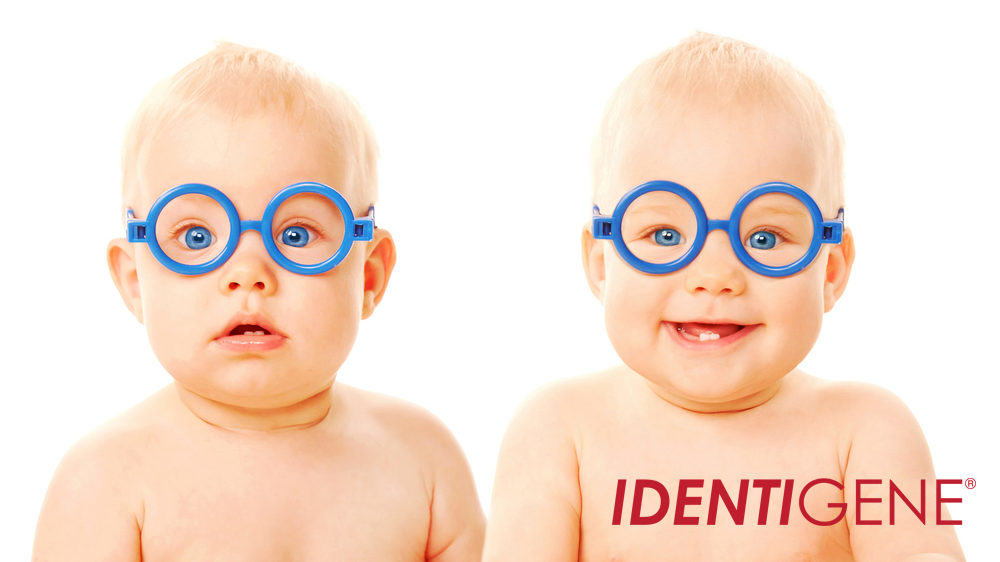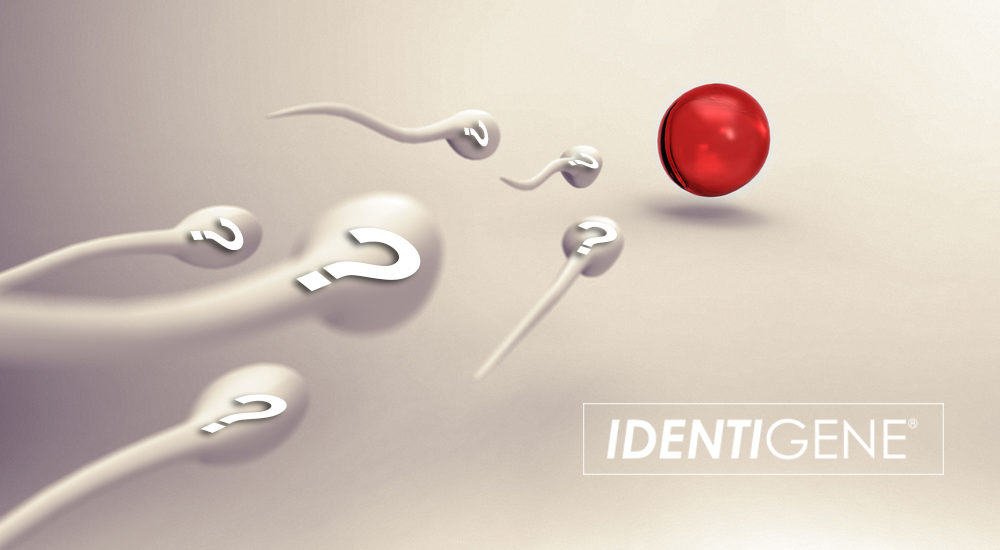Have you ever noticed how many more twins there are in the population now than when you were young? Multiple births have been on a steady upswing since 1980, most likely due to women choosing to have children in their 30s and even 40s. Because they produce more of a hormone that boosts ovulation or they use treatments (such as in vitro fertilization) to get pregnant, women who are having babies a little later in life are four times more likely than their younger counterparts to give birth to twins (Tchou). So do you have identical or fraternal twins?
If you are the lucky parents, how do you know for sure? Based on information from a British Study, relying on your doctor or ultrasound technician to give you a sure answer may not be the best idea, but doing a DNA test is! A twin zygosity test is a handy and affordable tool that parents can take advantage of to get sure answers. But first, here are some facts from a recent study you should be aware of.
The Shocking Truth: Twins are Sometimes Miscategorized
In 2012, a study released in the BJOG (a British medical journal) showed that a whopping 14.7% of parents who participated in the study were misinformed about whether their twins were identical or fraternal. Shocking revelations from a 2004 survey of members of the American College of Obstetricians and Gynecologists showed that 81% of doctors believe that twins who gestate with separate placentas are fraternal. However, it’s now widely known that 25-30% of identical twins actually have separate placentas as well as amniotic sacs (Bakalar).
How do some identical twins end up with two placentas?
Identicals come from just one fertilized egg, and if that egg splits within three days of conception, there is time enough for separate membranes and placentas to grow from the egg sac (Baby Centre). If the egg splits later, then the identical twins will share a placenta, which is what happens 70-75% of the time.
So although it’s relatively rare for identical twins to have separate placentas, it happens often enough that parents should want to seek definitive answers after the babies are born. So how do you know if you have identical or fraternal twins?
Identical or Fraternal Twins? DNA Provides the Only Sure Answer
Once your babies are born, a Twin Zygosity DNA test can be done to see if they share an identical DNA profile or if they have different DNA profiles.
Identical DNA profiles: If all genetic markers tested for each baby are mirror images of each other, then the babies are identical twins.
Different DNA profiles: Even if babies of the same sex are hard to tell apart, they may still be fraternal twins. If their DNA profiles are markedly different from one another, then they are fraternal.
How the test is done
A Twin Zygosity DNA test is very simple and completely painless. Parents just swab the inside of each baby’s cheeks and along the gums with specialized buccal (cheek) swabs and submit the samples to an accredited DNA lab. Within a week, parents have the definitive answer they’re looking for.
The Bottom Line
To wrap it all up, here are some things to remember:
- If your babies are different sexes, then they are fraternal
- If your babies are the same sex, they may be identical or fraternal
- If your babies share an amniotic sac and placenta, they are identical
- If your babies have separate amniotic sacs and placentas, you may have identical or fraternal twins
Only a DNA test can determine for sure if babies of the same sex who had separate amniotic sacs and placentas during gestation are identical or fraternal. So now you can know for sure if you identical or fraternal twins!
A Twin Zygosity test costs $199 and results are back in five business days.
To arrange a test, just give us a call at 800-344-9583 (M-F, 8:30 a.m. to 5:30 p.m. Eastern) and one of our experts will be happy to help.
LEARN MORE ABOUT A TWIN ZYGOSITY TEST from our parent company, DDC.
Follow us on Facebook and Twitter! If you have questions about paternity tests or other DNA testing services, please contact our Client Support Center at 888-404-4363, Mon-Fri from 8:30 AM to 5:30 PM Eastern Time. Our friendly, expert representatives are ready and happy to help. Get answers anytime by visiting our Help Center.
Sources
Approved by the BabyCentre Medical Advisory Board. “How Will I Know If My Twins Are Identical?” BabyCentre. Baby Center, LLC., n.d. Web. 06 Sept. 2016. <http://www.babycentre.co.uk/a1017891/how-will-i-know-if-my-twins-are-identical>.
Bakalar, Nicholas. “Childbirth: Identical or Fraternal? Not Always Clear.” The New York Times. The New York Times, 05 Mar. 2012. Web. 06 Sept. 2016. <http://www.nytimes.com/2012/03/06/health/research/study-finds-twins-can-easily-be-misclassified.html?_r=0>.
Tchou, Angela. “Are Twins Taking Over? The Dramatic Rise in Multiple Births.” Slate Magazine. Slate, 22 Aug. 2011. Web. 06 Sept. 2016. <http://www.slate.com/articles/life/twins/2011/08/are_twins_taking_over.html>.
van Jaarsveld C, Llewellyn C, Fildes A, Fisher A, Wardle J. Are my twins identical: parents may be misinformed by prenatal scan observations. BJOG 2012;119:517-518. 29 Feb.2012. 06 Sept.2016. http://onlinelibrary.wiley.com/doi/10.1111/j.1471-0528.2012.03281.x/full.









